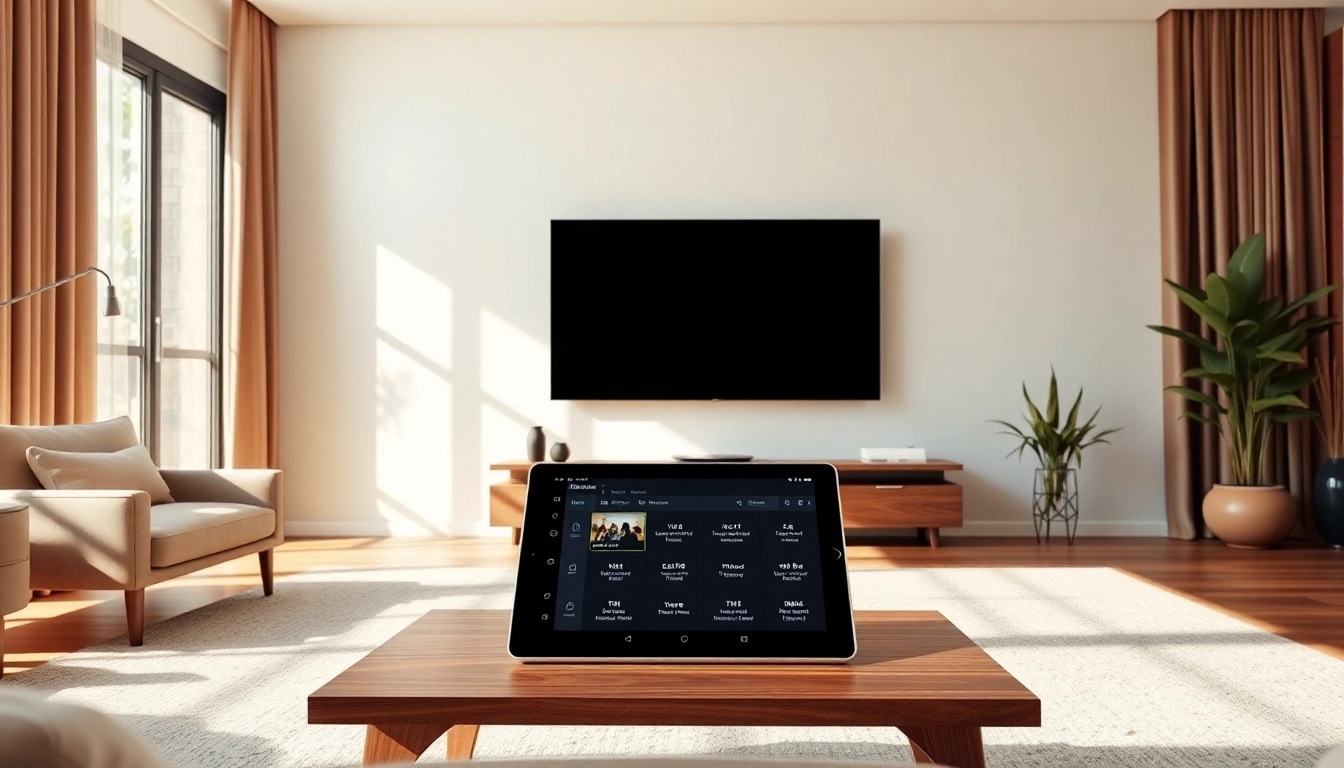Understanding Web Design Basics
Web design is an essential component of establishing a digital presence in today’s online marketplace. A well-crafted website serves as a virtual storefront, aligning aesthetics with functionality to create meaningful user experiences. To delve deeper into web design, it’s crucial to understand its foundational concepts.
What is Web Design?
Web design refers to the process of planning, conceptualizing, and arranging content intended for the web. This encompasses various elements such as graphic design, user interface (UI), user experience (UX), and search engine optimization (SEO). Essentially, web design extends beyond mere look and feel; it embodies a comprehensive approach that includes layout, color schemes, typography, and responsiveness across devices.
Importance of User Experience in Web Design
User experience is pivotal in web design, as it directly impacts user engagement and satisfaction. When users find a website intuitive, enjoyable, and accessible, they are more likely to spend time on it, leading to higher conversion rates. Key factors include:
- Navigation: Clear pathways help users quickly find what they’re looking for.
- Visual Hierarchy: Prioritizing information through design helps guide user behavior.
- Speed: Fast-loading sites reduce bounce rates and enhance user satisfaction.
Key Elements of Effective Web Design
Creating an effective website requires understanding and implementing various design elements:
- Color Scheme: Colors evoke emotions and can influence user behavior.
- Typography: The right typeface enhances readability and reflects brand identity.
- Imagery: High-quality images and graphics support the content and engage users.
- Responsive Design: Ensuring the site looks and functions well on various devices is paramount.
Principles of Effective Web Design
Understanding core design principles is key to developing visually appealing and functional websites. Here are the critical aspects:
Color Theory in Web Design
Colors significantly influence perception and brand identity. The psychology of color plays a vital role in web design, guiding users towards desired actions. For instance:
- Red: Often associated with urgency, it can stimulate excitement and encourage quick action.
- Blue: Conveys trust and professionalism, making it ideal for businesses aiming to establish credibility.
- Green: Represents growth and tranquility, commonly used in eco-friendly and health-focused websites.
Designers should choose color palettes that resonate with their audience while ensuring adequate contrast for readability and accessibility.
Typography and Readability
Typography is not just about font choice but also involves how typography impacts user experience. Good typography can make content easier to read, enhancing comprehension. Considerations include:
- Font choice: Using web-safe fonts enhances compatibility across browsers.
- Size: Adequate size improves legibility, particularly on mobile devices.
- Line Spacing: Proper spacing prevents the text from feeling cramped, enhancing the reading flow.
Layout and Structure
A well-structured layout enables users to navigate effortlessly. Common layouts include grid systems, which help maintain symmetry and organization across multiple devices. Effective website structures incorporate:
- F-Shaped Pattern: Users tend to read in an F-pattern, making the placement of key information essential.
- Above the Fold: Critical content should be visible without scrolling, maximizing initial engagement.
- Whitespace: Adequate spacing allows elements to breathe and makes the content less overwhelming.
Implementing Web Design Techniques
Implementing effective web design techniques is crucial for creating a site that stands out and meets user needs. Here are key strategies:
Choosing the Right Tools for Web Design
Designers have a plethora of tools at their disposal, from graphic design software to content management systems (CMS). The right choice impacts workflow efficiency and the final product’s quality. Popular tools include:
- Graphic Design Software: Tools like Adobe Photoshop or Sketch allow for creating refined visuals and prototypes.
- Prototyping Tools: Applications like Figma or InVision facilitate collaboration and iterative testing.
- CMS: WordPress, Joomla, and Squarespace simplify the website creation process for non-technical users.
Responsive Design: Adapting to Different Devices
With the increase in mobile users, responsive design has become paramount. This approach ensures that a website adjusts its layout and content to display effectively across a range of devices. Considerations include:
- Fluid Grids: Utilizing percentages instead of fixed sizes for layouts adapts to screen sizes.
- Media Queries: CSS rules that adjust styles based on device characteristics enhance adaptability.
- Touchscreen Considerations: Designing interactive elements that are finger-friendly improves usability on mobile devices.
Best Practices for Accessibility in Web Design
Ensuring that web content is accessible to all users, including those with disabilities, is a fundamental aspect of web design. Key practices include:
- Alternative Text: Providing text descriptions for images makes them understandable to visually impaired users.
- Keyboard Navigation: Facilitating navigation through keyboard shortcuts allows users who cannot use a mouse to access content easily.
- Color Contrast: Ensuring sufficient contrast between foreground and background elements makes content readable for users with color blindness.
Web Design Trends to Watch
Staying updated with trends in web design is vital for maintaining relevance and user engagement. Here are several current trends:
Current Trends in Web Design
Web design trends continually evolve, and staying ahead of these changes can make a significant difference. Some emerging trends include:
- Minimalism: Clean, simple designs focus on essential content without unnecessary embellishments.
- Dark Mode: Offering a dark theme not only enhances aesthetic appeal but also reduces eye strain for users in low-light environments.
- Psychedelic Colors and Gradients: Using bold colors and gradients can create visually dynamic websites that captivate visitors.
Integrating Multimedia into Web Design
Multimedia elements, such as videos, animations, and audio, enhance user engagement. Best practices for using multimedia include:
- Optimizing Load Times: Compressing media files ensures quick loading, reducing bounce rates.
- Contextual Use: Incorporating multimedia in a way that supports the text rather than distracts from it improves user experience.
- Autoplay with Caution: While videos can enhance engagement, autoplay can frustrate users if not implemented responsibly.
Sustainable Web Design Practices
In response to growing environmental concerns, sustainable web design is gaining traction. Designers can adopt green practices by focusing on:
- Energy Efficiency: Optimize images and code to reduce the server energy required to host and deliver a site.
- Green Hosting: Choose web hosting services that use renewable energy sources to power their servers.
- User-Centered Design: Prioritize usability to avoid wasted resources on unnecessary features that may not improve user engagement.
Measuring Success in Web Design
Effective web design is not just about initial aesthetics; continuous evaluation and adaptation are vital for long-term success. Here’s how to measure effectiveness:
Using Analytics to Track Web Design Performance
Analytics tools play a crucial role in understanding user behavior on your site. They provide insights into metrics such as:
- Bounce Rate: The percentage of visitors who leave after viewing only one page, indicating potential navigation issues.
- Conversion Rate: The percentage of users completing a desired action, providing insights into the effectiveness of CTA placement and content.
- User Flow: Tracking the paths users take through your site can help identify common drop-off points or successful entry pages.
Gathering User Feedback on Web Design
Collecting direct feedback from users can yield valuable information. Methods include:
- Surveys: Brief surveys can help gauge user satisfaction and identify specific areas for improvement.
- User Testing: Observing real users as they interact with the site provides practical insights into usability challenges.
- Heatmaps: Tools that display user interaction on your site highlight which areas attract the most attention and which are ignored.
Continual Improvement and A/B Testing
To maximize the effectiveness of web design, ongoing assessments and refinements are necessary. A/B testing can guide these improvements by:
- Testing Variations: Implementing small changes, such as button colors or text modifications, helps identify what works best.
- Measuring Results: Using analytics to evaluate user responses to different versions informs future design decisions.
- Iterative Design: Continually refining the site based on user data and testing keeps it aligned with user needs and market trends.



